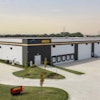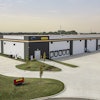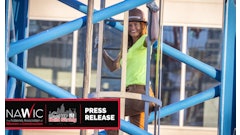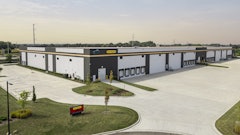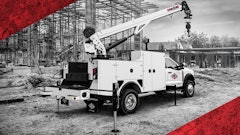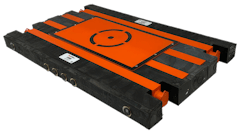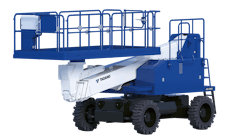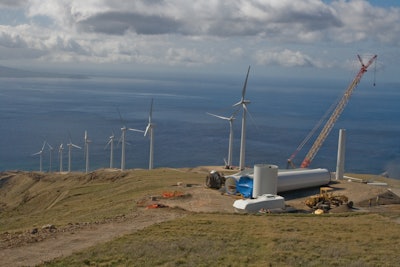
The challenge:
Installing 44 wind turbines on two Hawaii wind farms with limited travel and construction space while sticking to a detailed habitat conservation plant
The players:
Buckner Companies
RMT Inc.
First Wind
Hayden Murphy Equipment Company
American Piping & Boiler Co.
The Process:
The Buckner Companies of Graham, N.C., spent the last year with its 660-ton Terex CC 2800-1 NT lattice boom crawler crane helping to erect wind turbines on Oahu and Maui for RMT Inc. of Madison, Wis., and project owner, First Wind of Boston, Mass. The Kawailoa Wind project consists of 30 turbines on Oahu’s North Shore, generating 69 MW of clean energy, enough to supply 5 to 10 percent of Oahu’s annual electric demand, saving 300,000 barrels of oil each year.
Maui’s Kaheawa Wind II project adds 14 turbines and 21 MW of power to the existing wind farm nestled on a ridgeline of the West Maui Mountains. In total, the Kaheawa wind farm generates 51 MW of wind generated clean energy, enough to power 18,700 homes annually.
State law mandates that by 2030, at least 70 percent of Hawaii's power comes from clean energy sources, 40 percent of which must be locally produced from renewable sources. With this policy in place, wind energy is beginning to figure heavily into the state's energy policy.
The Kaheawa Wind project is the first U.S. wind project with a detailed habitat conservation plan. First Wind used the plan to be sensitive to habitat and wildlife needs, while fulfilling the island residents’ need for clean energy. It presented Buckner Companies and RMT with some interesting on-site challenges during turbine construction. However, these were met through the use of its new Terex CC 2800-1 NT.
The Kaheawa project consisted of 14 turbine pads and most had one thing in common: "The pads were extremely small, and only one site (pad six) had enough space to assemble the crane," said Jay Lusso, technical services representative for Hayden Murphy Equipment Company, a Terex Cranes distributor who was on site to assist with CC 2800-1 NT rigging and derigging.
The plan, according to Kevin Long, Buckner’s heavy lift project manager, was to erect a turbine and then move the crane under its own power to the next turbine pad without disassembling it. There was only one catch. The roads were extremely narrow. "The roads were only 20 feet wide, which meant a conventional 660-ton capacity crane was too wide to navigate the roads," said Long.
“We could not disturb the property at the sides of the road, since the grasses and habitat were protected,” Lusso added.
Long said that the company considered completing the Maui project with a 440-ton crawler crane to navigate the tight roads. In the end, however, "we wanted the higher capacity crane to deal with wind challenges, and we had the narrow track crane on the island," he said. "Having the higher capacity crane gave us more working days on the project."
Whereas the track footprint of the conventional Terex CC 2800-1 measures over 32 feet, the track width of the Terex CC 2800-1 NT is only 17.4 feet, allowing Buckner’s crews to navigate the narrow roads. Even with the narrow tracks, the crane still offers the high lift capacities. Large 16.4-foot-long by 4.6-foot-wide front/rear outrigger pads work in conjunction with two hydraulically operated side 9.8- by 7.9-foot outrigger pads to give the stability required for lifting heavy loads.
Construction of the 1.5 MW turbines on Maui required 276 feet of main boom with a 39.4-foot fixed jib. The crane’s upper structure was equipped with 198 tons of counterweight for the maximum 70 ton lifts to erect the turbines. With constant wind speeds on the West Maui Mountains often reaching 17 mph, RMT’s crews appreciated the strong load chart of the 660-ton crane and its maximum wind load rating of 21.9 mph.
Once a turbine was finished, crews moved the crane to the next pad. "It was about 100 yards between each turbine pad," Lusso said. The CC 2800-1 NT’s remote control aided in safely moving the crane from pad to pad.
If the narrow roads weren't challenging enough, the steep grades of the mountainous terrain added to the project’s difficulties. "We were traveling unusually high grades of up to 17.5 percent," Long said. With its maximum 10 degree gradeability, the Terex CC 2800-1 NT efficiently handled the steep grades, and its Quadro track drive helped with maneuvering by allowing the tracks to counter rotate to make tight turns.
RMT’s crews started at turbine pad site six and worked their way down the mountain to pad 14. When finished at turbine 14, they moved the CC 2800-1 NT up the mountain without disassembling it to pad one and worked their way back to pad six.
Once back to turbine number six in May, they had enough room to disassemble the crane for transport to Oahu. Transport of the crane to and from the port and between Islands was arranged by locally owned general/mechanical contractor American Piping & Boiler Co. (APB), Kapolei, Hawaii. “Moving between islands was logistically challenging, but APB did a fantastic job handling all of the arrangements,” Long said.
When using the narrow track crane at the Kawailoa Wind project on Oahu, Buckner noted one additional advantage the CC 2800-1 NT offered - ease of assembly and disassembly. From June through mid-October, crews used the crane to build 30 of the larger 2.3 MW turbines. "Because of the challenging site conditions, we had to assemble and disassemble the crane three times," says Lusso.
Hayden Murphy was on site each time the crane was disassembled to offer support and consultation. Additionally, the same remote control unit used to move the crane from pad to pad, is also designed to assist with crane assembly.
These large turbines required a maximum lift capacity of 105 tons. The crane was equipped with full counterweight, 334.6 feet of main boom and a 39.4-foot fixed jib offering up to 10-degree offset.
Even with the longer boom configuration and 50 percent higher capacity lifting requirement, Buckner did not need to equip the crane with its optional superlift for the project. Long said this significantly improved crane assembly and disassembly efficiency. "The total disassembly and reassembly process took two to three days," he said. "If we would have needed the (superlift) derrick, this would have added another full day to the process."
To ensure these turbines continue to harness the renewable wind energy at peak efficiency, Buckner will keep the Terex CC 2800-1 NT on Oahu for five years. The company has created a joint venture with APB, American Piping & Buckner, to assist with maintenance and service activities.

